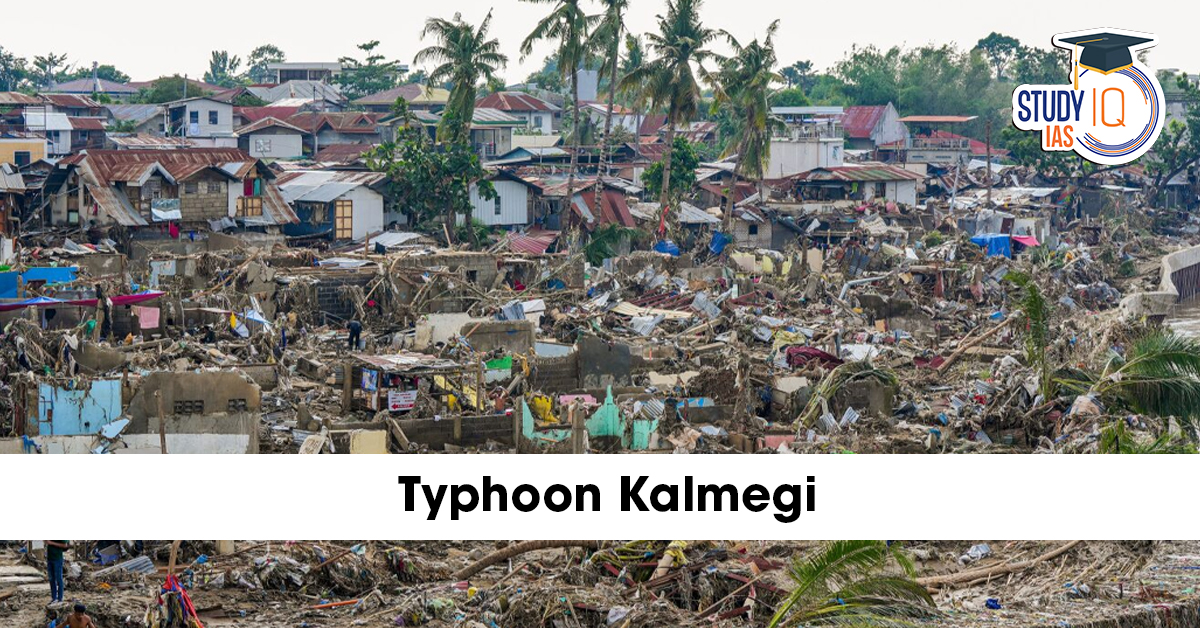Table of Contents
Typhoon Kalmaegi 2025 has left a trail of destruction across Southeast Asia, killing nearly 200 people and devastating large parts of the Philippines and Vietnam.
Scientists warn that rising sea surface temperatures — a direct consequence of global warming — have made this year’s deadliest typhoon stronger, wetter, and more destructive than similar storms of the past.
Kalmaegi’s rampage coincides with ongoing UN climate talks in Belem, Brazil, where world leaders are debating how to curb greenhouse gas emissions.
Kalmaegi’s Path of Destruction
-
Philippines: The typhoon first made landfall earlier in the week, killing at least 188 people, destroying infrastructure, and flooding vast stretches of farmland.
-
Vietnam: After crossing the South China Sea, it hit central Vietnam late Thursday, killing five people and leaving hundreds homeless.
-
Thousands remain displaced as rescue teams race against time to deliver relief to storm-ravaged regions.
Images from Cebu province show submerged villages, uprooted trees, and collapsed bridges — a grim reminder of Southeast Asia’s growing vulnerability to climate-fueled disasters.
The Climate Connection
Experts say Typhoon Kalmaegi’s intensity was amplified by unusually warm ocean temperatures in the South China Sea and western Pacific.
“Sea surface temperatures in both the western North Pacific and South China Sea are exceptionally warm,”
said Ben Clarke, researcher at the Grantham Institute on Climate Change and Environment (London).
“Kalmaegi is more powerful and wetter because of these elevated temperatures — and this trend is clearly linked to human-caused global warming.”
How Climate Change Fuels Stronger Typhoons
While not every typhoon can be directly attributed to climate change, scientists have established strong evidence linking warming oceans to stronger tropical cyclones.
Gianmarco Mengaldo, researcher at the National University of Singapore, explains:
“Climate change enhances typhoon intensity by warming ocean surface temperatures and increasing atmospheric moisture. The likelihood of stronger, wetter, and more destructive storms rises in a warmer world.”
Scientific Mechanism
-
Warmer oceans → More evaporation → More water vapor in the atmosphere.
-
Greater moisture → More intense rainfall and faster storm intensification.
-
Higher sea levels → Stronger storm surges and coastal flooding.
Thus, while the total number of storms may not have increased, their destructive potential has significantly risen.
Intense But Not Necessarily More Frequent
Researchers emphasize that climate change increases storm intensity, not frequency.
“The total number of typhoons each year hasn’t shown a clear long-term increase,”
said Mengaldo, who co-authored a recent study on Typhoon Ragasa (September 2025).
“However, the number of rapid intensification events and super typhoons has risen sharply due to warmer oceans and atmospheric instability.”
Last year, the Philippines experienced six deadly typhoons in just one month, and unusually, four tropical cyclones formed simultaneously in November — evidence that storm clustering and shorter recovery gaps are becoming more common.
Back-to-Back Storms Compound Damage
According to Feng Xiangbo, tropical storm researcher at the University of Reading (UK):
“Back-to-back storms can cause more damage than the sum of individual ones. Soils remain saturated, rivers stay full, and infrastructure is already weakened.”
This pattern means even moderate storms can trigger catastrophic flooding if they follow closely after previous ones — a phenomenon increasingly observed in Southeast Asia.
Rising Risk Zones and Sea Level Threats
Scientists warn that typhoons are now striking new regions as sea temperatures rise and weather patterns shift.
“Coastal regions affected by tropical storms are expanding significantly,”
said Feng.
“Combined with sea-level rise, this poses severe risks to low-lying areas like the Philippines and Vietnam’s shallow coastal plains.”
With global sea levels rising about 3.7 mm annually, the impact footprint of each storm now stretches further inland, threatening millions living near coastlines.
Belem Climate Talks: A Timely Wake-Up Call
Kalmaegi’s devastation coincides with UN climate negotiations in Belem, Brazil, where delegates from 190+ countries are discussing emission targets and climate finance.
The typhoon has become a powerful symbol of climate urgency, highlighting how developing nations such as the Philippines and Vietnam — among the world’s most disaster-prone — bear the brunt of carbon emissions from industrialized economies.
Experts Call for Global Action
-
Cut greenhouse gas emissions to keep warming below 1.5°C.
-
Invest in early warning systems and climate-resilient infrastructure in vulnerable regions.
-
Support loss and damage funds for developing countries repeatedly hit by disasters.
“Kalmaegi is a stark warning,” said Dhrubajyoti Samanta, climate scientist at Nanyang Technological University, Singapore.
“Even if the number of storms doesn’t rise dramatically, their clustering and cumulative impacts will.”
Key Facts: Typhoon Kalmaegi 2025
| Parameter | Details |
|---|---|
| Typhoon Name | Kalmaegi (2025) |
| Regions Affected | Philippines, Vietnam |
| Fatalities (as of Nov 10) | 193 |
| Peak Wind Speed | ~200 km/h (estimated) |
| Main Cause of Intensification | Warmer sea surface temperatures |
| Scientific Consensus | More intense, wetter storms due to global warming |
| Climate Context | Coincides with UN Climate Talks in Belem, Brazil |
Conclusion
Typhoon Kalmaegi 2025 is more than a deadly storm — it’s a climate warning.
As ocean temperatures rise and storms gain strength, Southeast Asia faces mounting risks of destruction, displacement, and economic loss.
While immediate rescue and relief remain critical, long-term resilience demands that nations tackle climate change at its source — by cutting emissions, restoring ecosystems, and empowering vulnerable communities.


 Micrometeoroids: Tiny Space Particles, M...
Micrometeoroids: Tiny Space Particles, M...
 India Needs a National Insolvency Tribun...
India Needs a National Insolvency Tribun...
 Unlocking the Potential of India–Afric...
Unlocking the Potential of India–Afric...

























